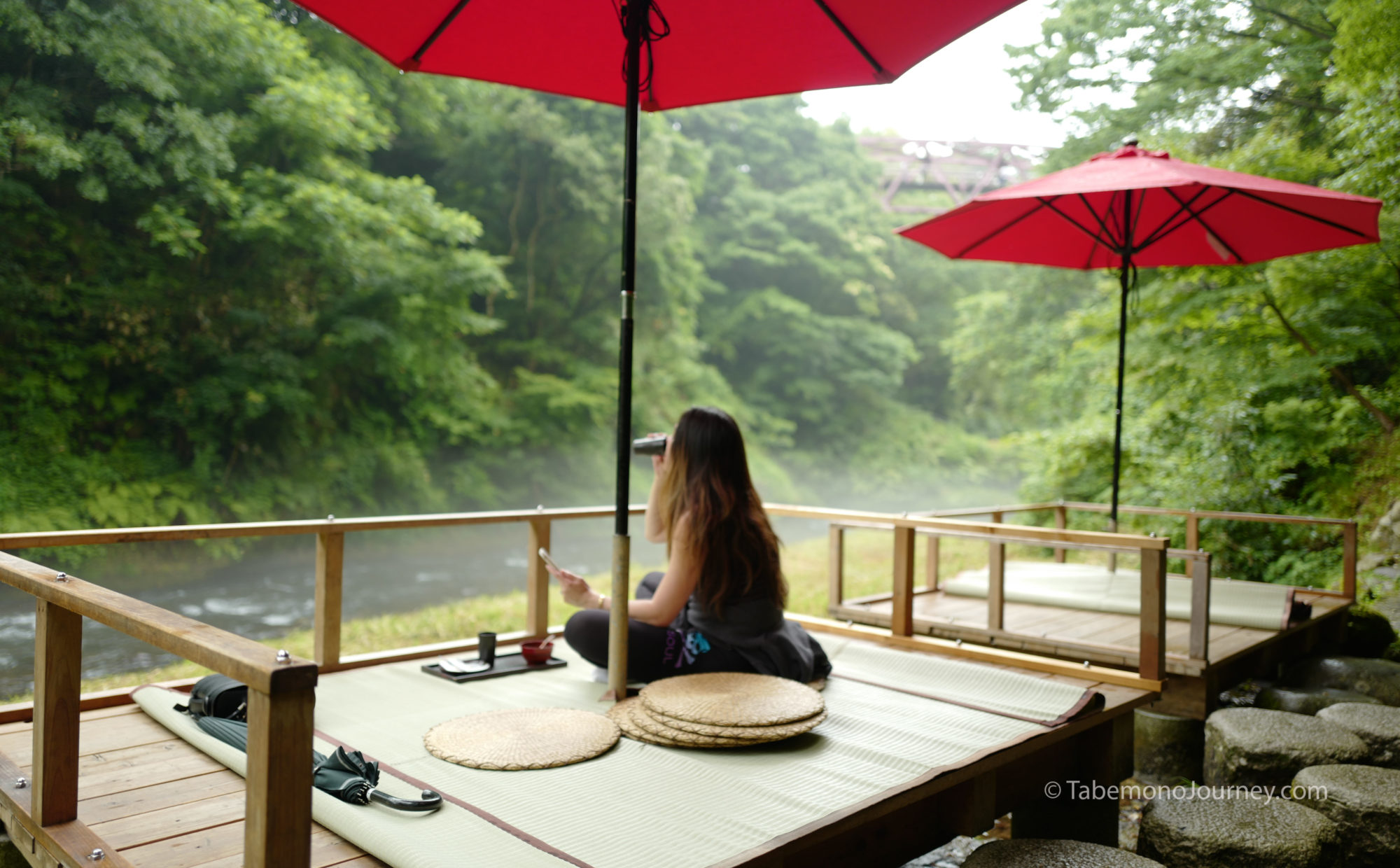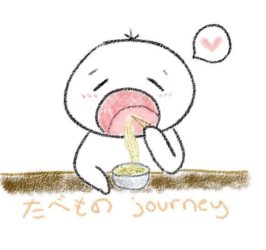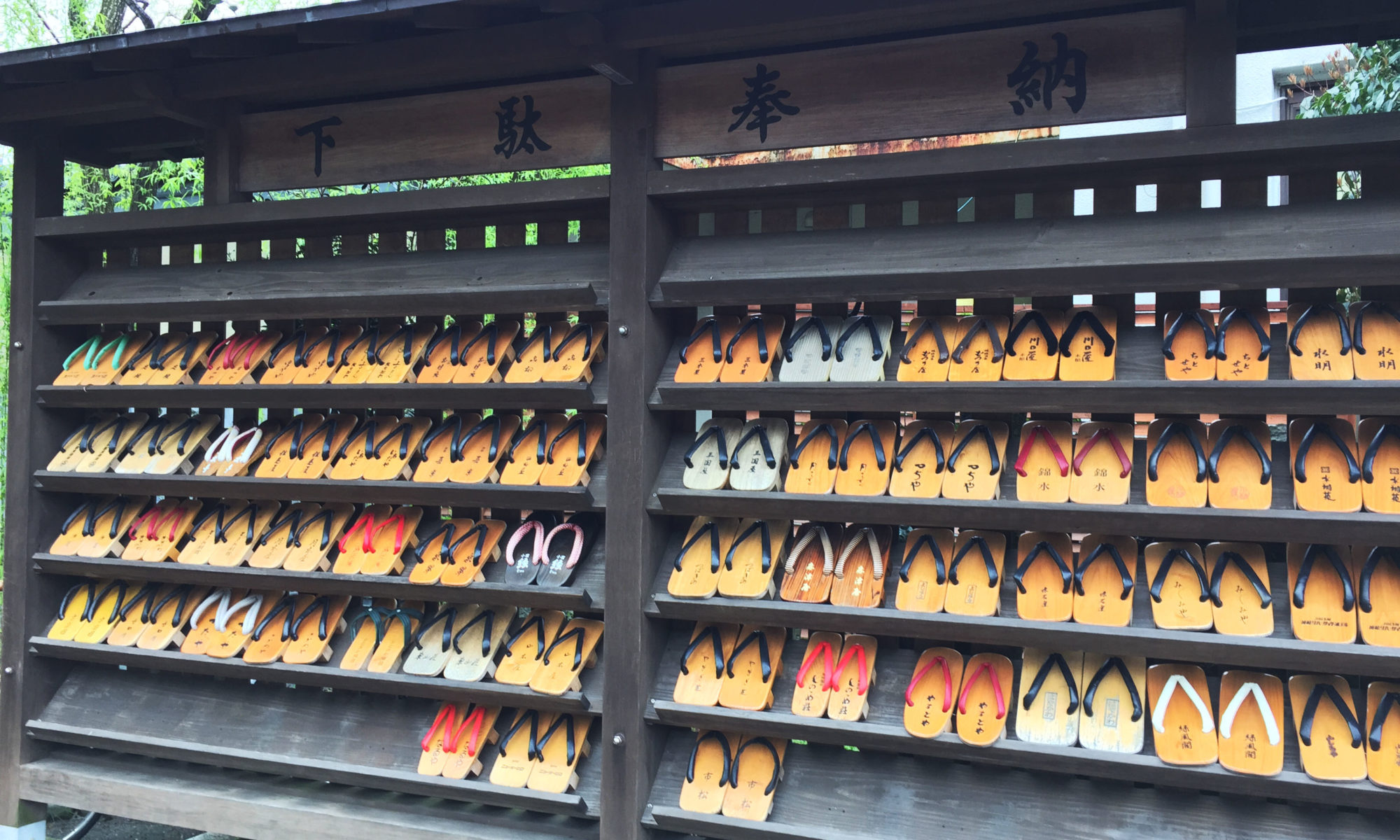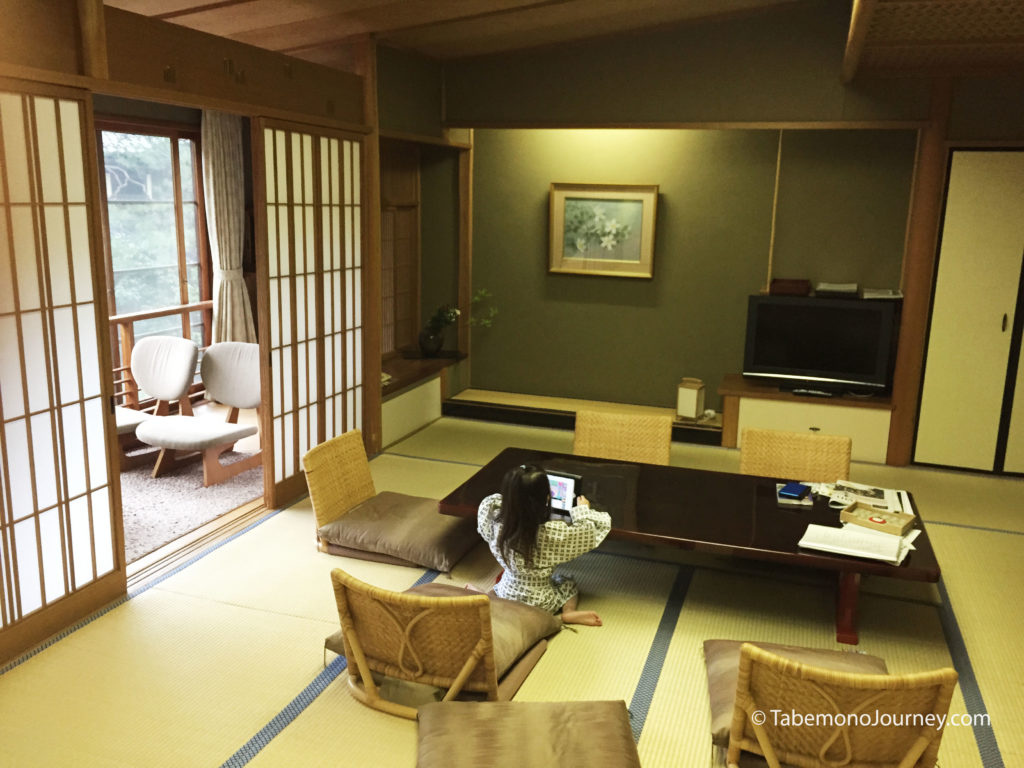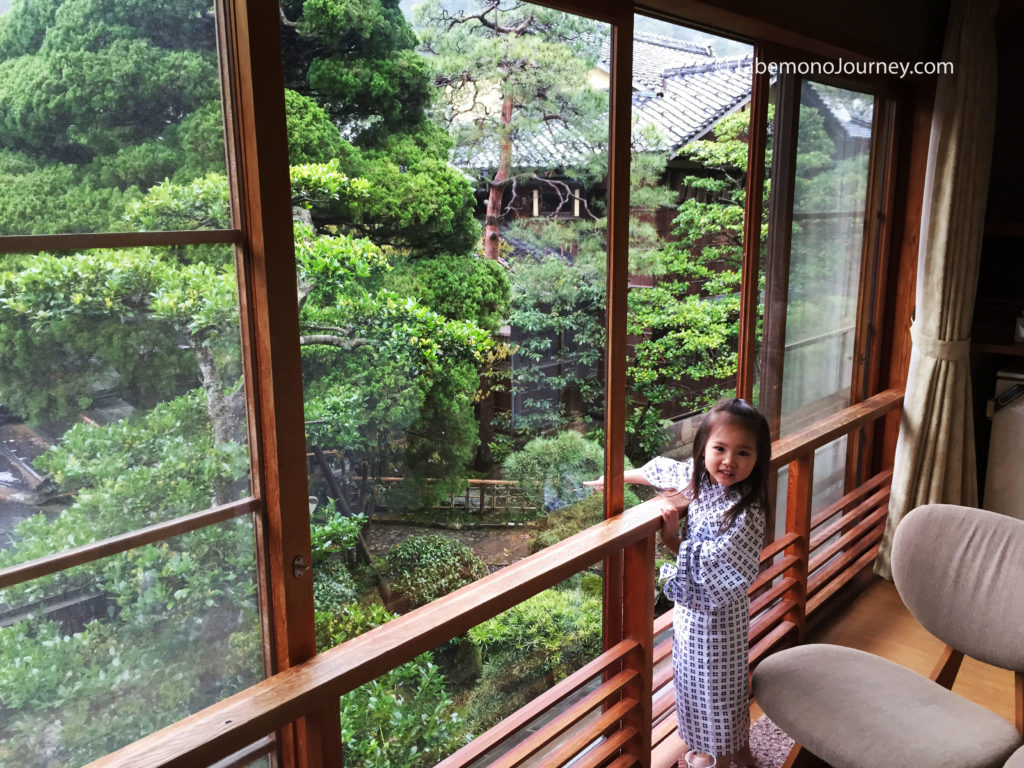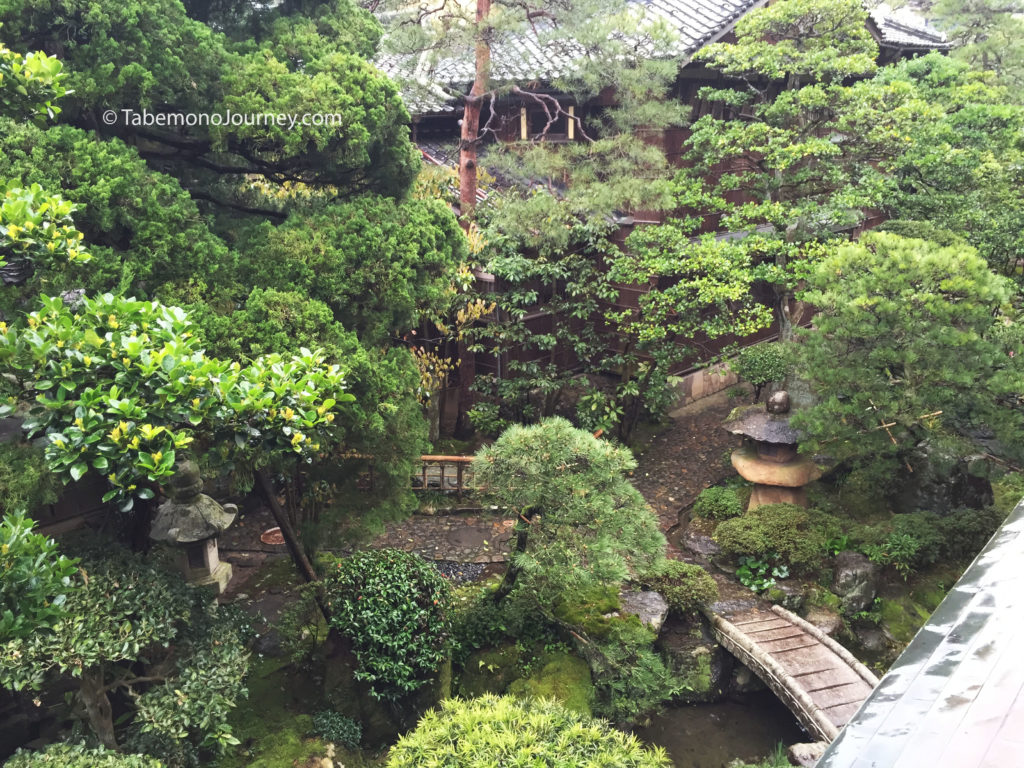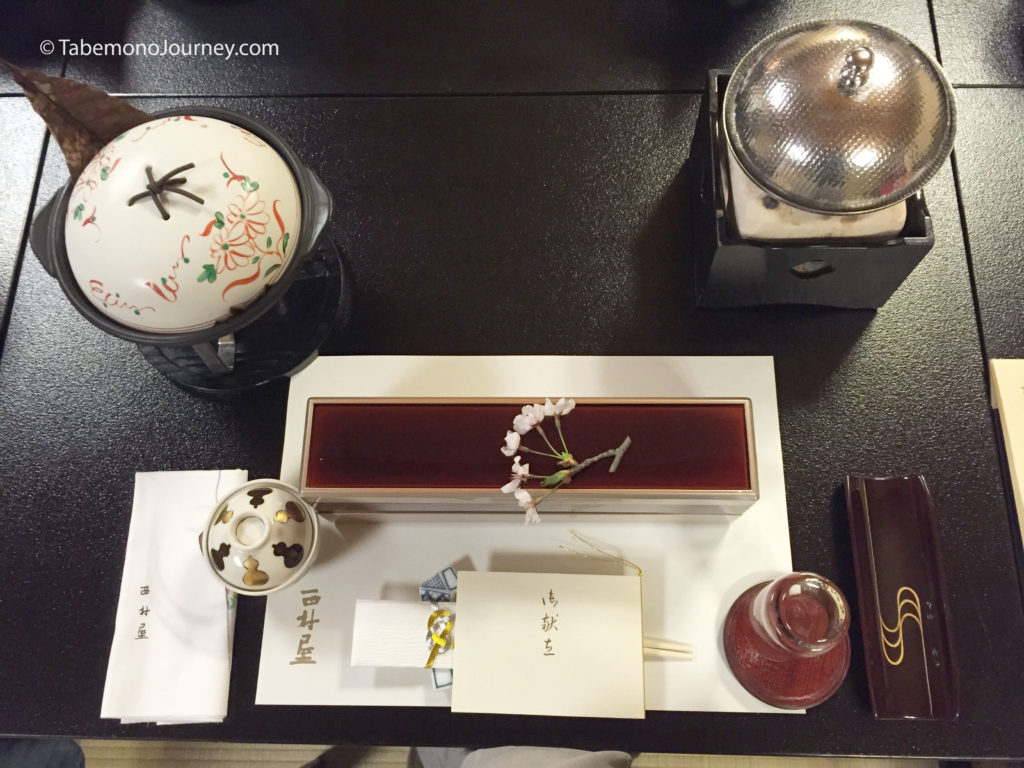In a parallel post, I mentioned one of our favorite places to visit in our past travels to Japan was Kinosaki. It is a charming and quaint little town surrounded by rural mountains and the sea. It is one of those places in Japan that make you feel like you were transported back in time to a different era. During our stay at Kinosaki, we booked our overnight stay at Nishimuraya Honkan ryokan.

The ryokan itself has a rich history as it was founded in 1854 as as much is a much more traditional Japanese tea house style architecture than some of the more modern ryokans I posted posted in my ryokan section. The focus is on simplicity, with natural lighting throughout the proper and accentuated by warm wood and a perfect blend with nature. There are over 31 rooms and three suites spread across long hallways.
The room we stayed in had a minimalist approach and was covered with tatami mat floors and like most ryokans have sliding shoji paper doors that divide sitting areas with floor-to ceiling picture windows from larger living spaces that also serves as a dining room and bedroom depending on the time of day.
Our room overlooks the ryokan’s lush gardens. Our younger two children loved to look out the window and admire the garden views and watch the koi swimming gently across the pond.
You can walk through the garden that is full of Japanese pines, moss covered rock, and connecting bridges that oversee carp-filled ponds. However it rained during our stay so we admired it from our windows.

Nishimuraya has several types of onsen you can use, and from what i researched, it’s one of the few with its own large baths in Kinosaki. However, Kinosaki itself is one big onsen as it has 7 unique public onsen spread across town. It’s a good dilemma as to whether you want to stay within premises or go and enjoy the town. It is one of reasons to spend several days in Kinosaki, but we unfortunately only stayed one night so made use of our ryokan’s onsen.

After a soak in the onsen, we did a stroll and tour of the town in yukata (cotton kimono provided by most ryokan) and geta (wooden clogs). The Geta took getting use to, as we gingerly walked across town in them. This is one of the nice allure of Kinosaki, as it is common for folks to wear their yukata outside, as the whole town is almost like one big onsen in itself, boasting 7 public baths.
Since we have a family of six, we took our meals in their dining area instead of in our room. Nishmuraya Honkan serves kaiseki style dinner. The head chef is Etsunobu Takahashi who interestingly also produced Japan Airline’s domestic first-class menu back in 2012.
For the adults, we started with seasonal sake. But from there we had our seasonal hors d’oeuvres. These were stored in a two-storied lacquered box and contained:
- kumquat castella yawata maki, and two colored dang dumpling
- young bamboo shoot tofu, with combo kept and tobiko
- urui plant hitachi, firefly squid with karashi miso
The middle photo is the last of the hors d’oeuvres and had fatsia sprout tempura, tade grilled young ayu, and temari zushi.
The last photo on the right was our owan course. It’s a clear dashi soup with sakura tofu, spanish mackerel, wasabi, vegetables, and maitake mushrooms.
Kinosaki is famous for their Matsuba crab, a type of male snow crab famous to the area. However it is in-season from November to March and being in April we missed out on the Matsuba full course crab menu, but they did serve us some of the russian crab that’s in season year long.
- The first photo was our sashimi course which included hirame, shellfish, matsuba crab legs, fiddlehead hitachi, and red udo plant.
- The middle photo is Tajima beef, which is another speciality of the area. Tajima beef are famous also as some of the younger calfs from the area are shipped to Kobe to become Kobe Beef as they mature. The beef here is prepared in the traditional miso hoba (magnolia) leaf yaki grilled style. It is grilled with myoga, onion, brussel sprouts, and maitake mushrooms.
- The photo the right as a plate full of Kasumi snow crab and spring vegetables.
- Our grilled course is the abalone pictured on the left. It is marinated with sansho pepper and paired with akamoku seaweed, and grilled bamboo shoots and grilled eggplant.
- The middle photo was our hot pot course and the focus was local seafood and vegetables in a dashi broth.
- We had pice with beans as a side dish to our courses.

Kounotori rice, Tsukemono, and red miso soup finishes our savory portion of our meal. A simple fruits and jelly followed for dessert. Our younger kids a pretty big deal as well, complete with sashimi, fruits, salad, chicken karate, and udon noodles. They were pretty happy with their meal and so were the adults and our pre-teens.

After dinner, we took a nice stroll in town. The night screen is pretty active where you can not only visit the public onsen, but there is also cafe, shops, arcades, and bars that can keep you entertained. But we mostly took a walk to enjoy the beautiful night time townscape.

Our futon beds were laid out when we got back to your room and we enjoyed a comfortable rest on our mattresses with the nice smell of the tatami mats to help us with a nice peaceful rest.

Our breakfast was another feast. It’s more of a traditional Japanese breakfast with lots of variety. Afterwards, we did one last visit of town before checking out of our hotel.

We were fortunate to have visited Kinosaki during sakura blooming season and enjoyed the spectacular view of the cherry blossoms in full bloom. For a full view of the town, you can read more about the town attractions in the post here.
Ryokan information:
Nishimuraya Honkan Kinosaki Onsen (城崎溫泉 西村屋本館)
469 Kinosakicho Yushima, Toyooka, Hyogo Prefecture 669-6101, Japan
Tel: +81 796-32-2211
